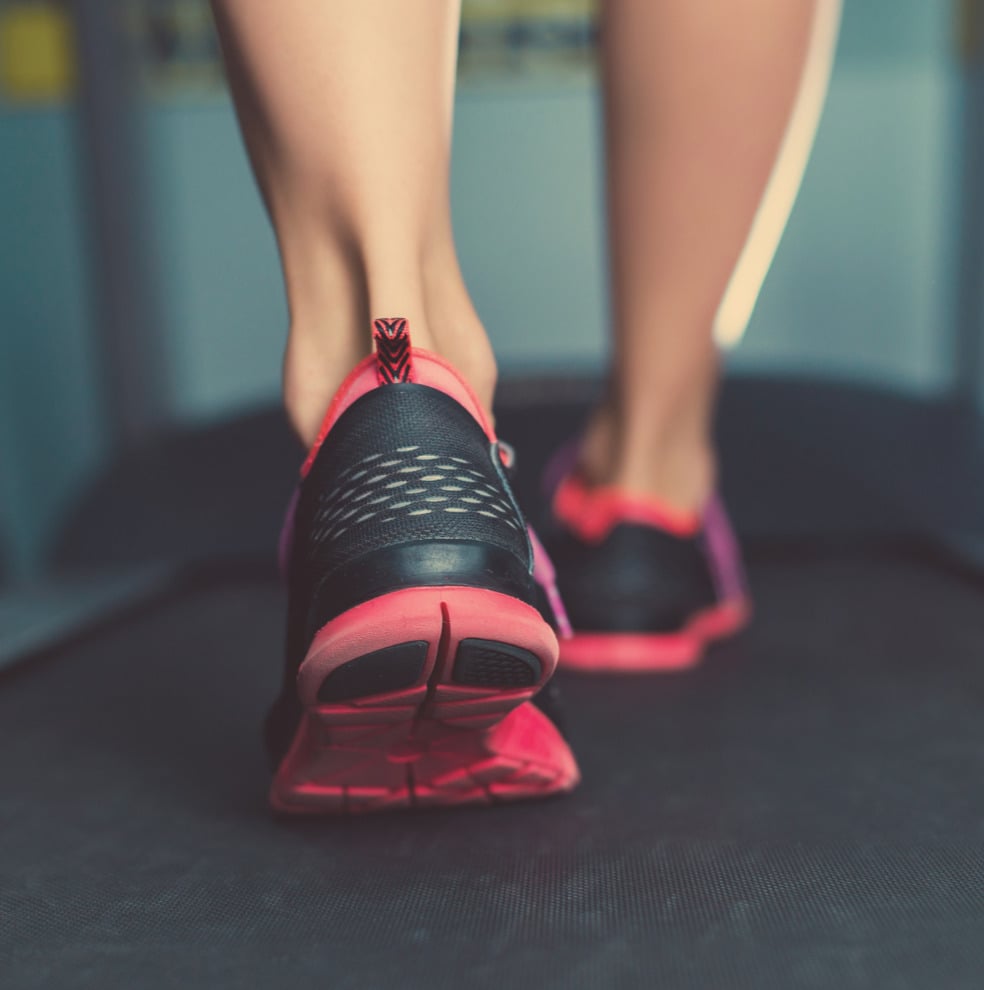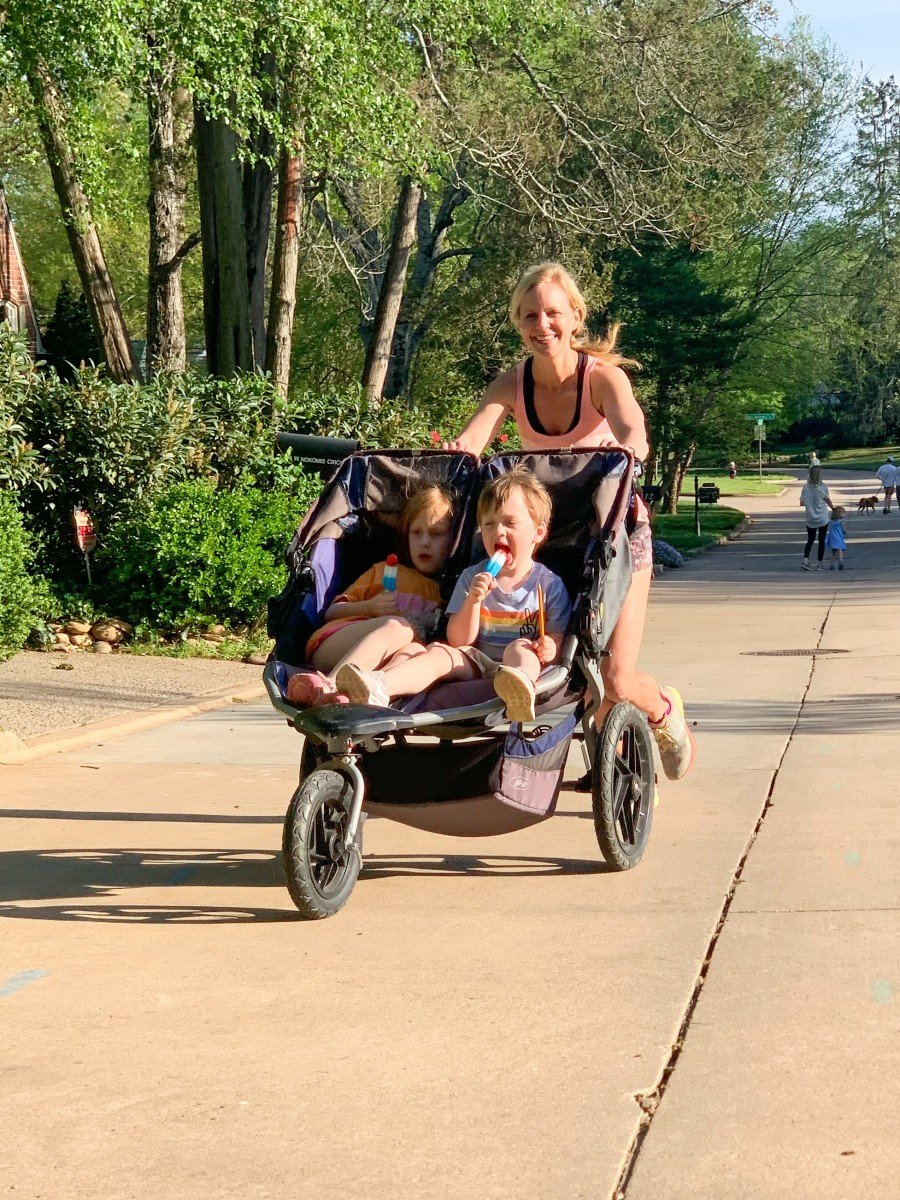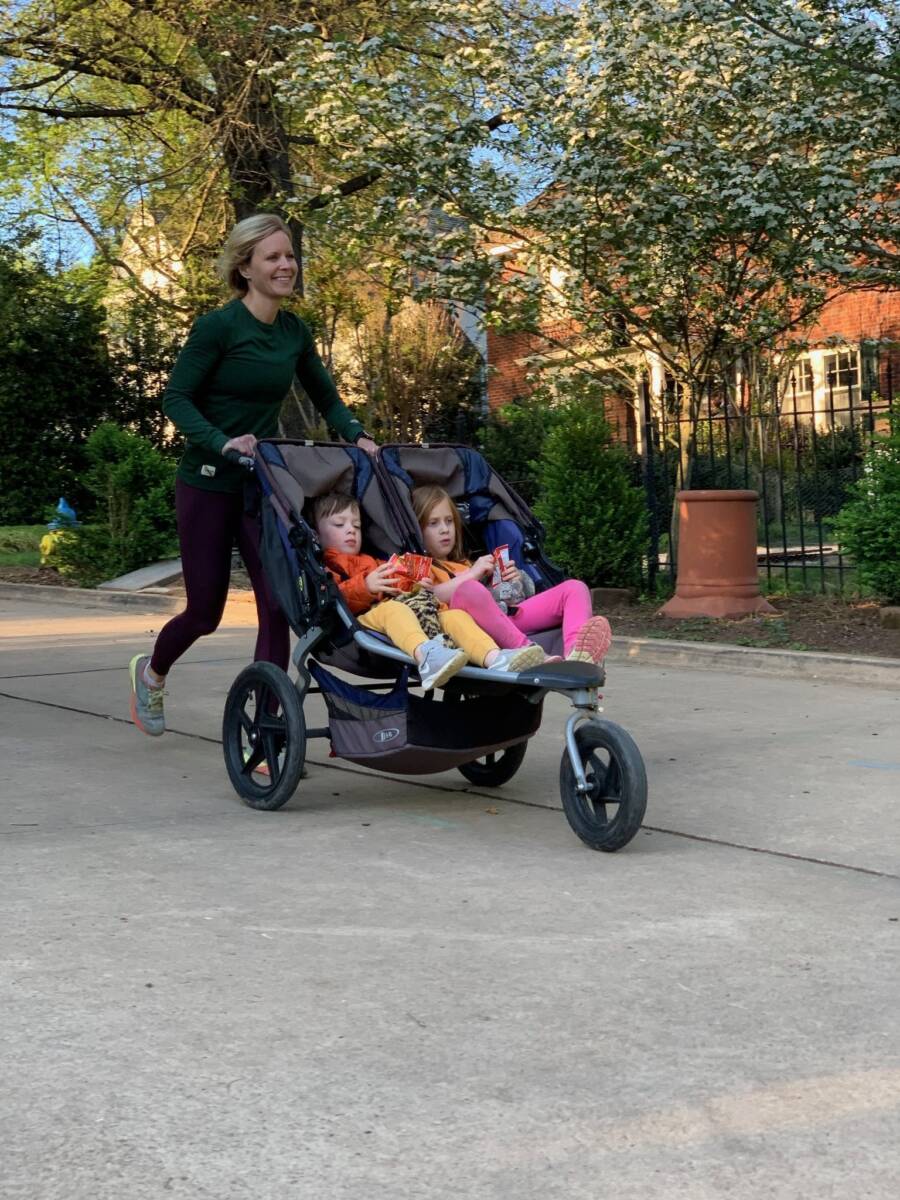How I’m Healing My Hip Labral Tear Without Surgery
I had a labral tear in 2023. Labral tears in the hip often don’t heal on their own, they require surgery. I opted to avoid labral surgery for regenerative medicine (stem cell and PRP injections). They worked! I share my experience below.
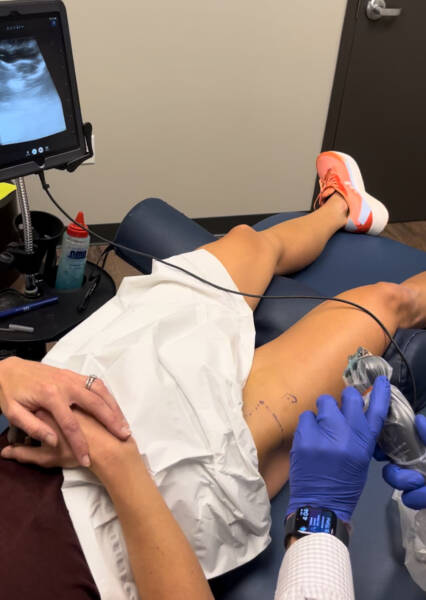
This article is in keeping with a tradition I have started of recounting my major running injuries and how I healed them. Today, I’m sharing how I healed my hip labral tear without surgery in 2023. I have found that with my past posts, which recounted how I healed my torn hamstring and how I healed my torn plantar fascia with PRP, my experience helped informed others.
Part of what makes being an injured runner so hard is that it is SO confusing. It takes time to determine what the running injury is. And then it takes time to figure out the path forward. Lots of people have lots of opinions and their own personal experiences.
Table of contents
Why I am sharing this
When I shared on Instagram that I had a torn hip labrum, I had dozens of people reach out to me about their torn labrums and what helped and what didn’t. They were well-intentioned, but all the information just muddied the waters.
I learned from my past two major running injuries (my torn hamstring and my torn plantar fascia) that it is important to trust your medical team and the path you’re on. Don’t let others’ paths make you doubt yours. Finding a doctor and/or physical therapist you trust is paramount. I am lucky I found mine. It made my decision to use regenerative medicine instead of surgery to heal my torn labrum that much easier—despite many people telling me I should do surgery.
I think a lot of people don’t know non-surgical interventions for torn labrums are an option, so I want to share my experience. My wish is not to confuse you but to help you decide what is best for you.
My experience with a torn hip labrum
I started having hip pain in the fall of 2022 after returning to running following a three-year hiatus due to injuries. The pain felt like a pinch in the front of my hip that didn’t bother me while running but I could feel it while walking and doing movements like hip circles. I got x-rays in February of 2023 which found that I had a CAM deformity causing a hip impingement. I believed this was the source of my pain.
I ran two marathons with my hip pain, including a 2:58 and 2:54 (PR in the spring of 2023).
I had hoped some eccentric loading followed by a break after my second marathon would alleviate the pain, but it didn’t…And, it began to intensify after rebuilding in the late spring of 2023, being felt as an acute, superficial ache in the front of my hip during daily activities (as opposed to a deep ache as most people with hip labral tears describe). I also started feeling a grinding/vibration sensation near the injured spot when at rest.
From bad to worse
In the late June of 2023, I decided I needed to get it looked out by my old physical therapist. He noticed that my hips were uneven. He adjusted them and performed western dry needling and cupping on my hip flexor and quad (which has compartment syndrome due to compensating for my hamstring injury).
Unfortunately, after treatment, everything got progressively worse. By the end of July, I stopped running completely. I couldn’t take a step without an acute sharp pain in the front of my hip near the crease of my leg. It felt like a knife was stabbing into my hip flexor and then cutting down my thigh.
All the surrounding tendons and muscles were also very sore and achy. I could dig my finger under my hip bone and touch the ground zero spot of my pain. I could not stand on one leg without pain. And unlike any previous injury I’ve had, the level of pain stayed the same through my attempted runs. It shot up on the first step and stayed the same throughout.
My PT suggested I get a cortisone injection. My doctor agreed. They did it into the hip flexor which was diagnostic. If it alleviated the pain, then we knew it was likely hip flexor tendonitis. If it didn’t, then we knew it was likely a labral tear.
It didn’t.
My labral tear diagnosis & decision
I had to wait close to 8 weeks to get a T3 MRI because labral tears are hard to see with a regular MRI. It confirmed an anterior labral tear. Due to where it was located and the size of my CAM deformity (not huge), my doctor said I would be a good candidate for regenerative medicine. He has never steered me wrong, and the reduced time off running compared to surgery was very appealing to me.
I decided right away to do a nonsurgical treatment using injections over surgical intervention (plus pelvic floor physical therapy and do a gait analysis to check all boxes).
Many people can manage their labral tears with PT. I did not want to “manage” the pain. I have had to deal with injuries for the past several years and didn’t want to add another thing to stay on top of during my running career.
Some people can run with the pain of their hip tears. However, I have pretty aggressive goals which include training my body to run 6:15 mile pace for 26.2 miles and running a mile under 5 minutes. I don’t want to be hindered by hip pain. Instead, I viewed this as an opportunity to get better and stronger.
One of the things I have “managed” is my quad compartment syndrome of my subcutaneous femoral nerve. I suspect and hope the compartment syndrome is related to the hip impingement and labral tear, and will improve following my regen med. We shall see on that one…
How do you heal a torn hip labrum?
While many people opt to manage labral tears with physical therapy which works to strengthen the areas surrounding the hip to take less pressure off the hip joint, some people’s condition (and running goals) will require the labrum be fixed.
There are two treatment options to fix a labral tear: surgery and regenerative medicine.
Hip Labral Tear Surgery:
A hip arthroscopy is an outpatient procedure that involves a small incision to remove part of the injured labrum or sews it back together, reattaching it back to the hip socket. Often, especially in the case of an impingement, the bone will be shaved down so that the ball and socket fit well together.
Most patients will be on crutches for 2 to 6 weeks. Return to running for a hip labral tear recovery is a very gradual process that can happen sometime between 2 and 6 months depending on the extent of the injury.
Regenerative Medicine:
A non-surgical hip labral tear treatment can use regenerative therapies interventions such as platelet-rich plasma (PRP), platelet-rich fiber (PRF), stem cells, and umbilical cord cells to heal the damaged tissue.
I opted for PRP and umbilical cord cells called Clarix Flo and will detail the regenerative medicine method I am using below!
PRP & Clarix Flo Injections for a Hip Labral Tear
This treatment involves 3 rounds of injections. It cost me about $1,000 with the ClarixFlo costing $650.
Injection 1 includes:
- PRP: Platelet-rich plasma (PRP) therapy injects a concentration of your own platelets from your own blood to accelerate healing. Platelets are part of our blood that clot and stop bleeding. I go into more depth on
- PRF: PRF, or platelet-rich fibrin, is the next generation treatment of PRP in that it is a fibrin matrix of platelet cytokine, growth factors, and cells to promote healing in soft tissue. My doctor described it as sticky, sticking to the wound like glue and bringing each side together.
- Clarix Flo: Clarix Flo is the next level of regen med injections. This injection has amniotic tissue from the umbilical cord. It helps spur healing and tissue growth, while controlling inflammation.
How? Umbilical cord tissue contains mesenchymal and hematopoietic stem cells, growth factors, and cytokines (proteins important for cell signaling) that work together to repair damaged tissue and reduce inflammation.
This all happens when ClarixFlo is injected into the injured tissue which then releases the growth factors needed to trigger healing and regeneration naturally, along with reduced inflammation and increased pain relief!
My Experience with PRP & Clarix Flo for My Hip Labral Tear
I got my first injection of PRP and PRF two days after getting my MRI results and about two months after I stopped running due to my labral tear.
Here is how each injection went.
-
Week 1, Injection 1 (PRP and PRF):
My doctor and nurse practitioner at Apple Health Care used diagnostic ultrasound to perform the injections. They performed two injections of PRP into the hip capsule around the injury site. Then they injected PRF where the tear was.
The PRF injection hurt the most. My hip was sore the next day in the glute. It felt like a bee sting. It wasn’t terrible compared to the PRP into my foot for my plantar tear was worse than child birth….After each injection, I was told to do hip circles to alleviate pain and circulate the injected plasma.
You should not do anything that hinders the healing process so no NSAIDs or icing. Also, you cannot submerge yourself in water for 24 hours (no Epsom salt baths). Finally, for the first week following an injection, you cannot do any lower body exercise. So I started a goal of 100 pull-ups and 200 push-ups daily (for mental health).
-
Week 3, Injection 6 (Clarix Flo):
Two weeks following the first injection, I got the Clarix Flo injection directly into where my labral tears were. You can see a video of the needle going in and cloud of fluid surrounding the tear site here. Because they use
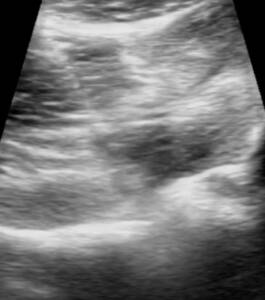
ultrasound, my doctor was able to see that the PRP and PRF are working, and my tears are healing. This actual injection hurt less than the PRF.
However, I was sore and walking with a limp for 5 days after. I felt like I couldn’t straighten my leg due to the limited range of motion in my hip. (I had to get adjusted because my limp caused my hip alignment to get all wonky). The pain is due to the healing process that the ClarixFlo triggers which begins with inflammation.
The post-injection protocol was the same: No lower body exercise, no anti-inflammatories, no bath. Following a week of rest, I can begin light exercise like swimming and the elliptical. Then I can move to a bit more intense exercise like alter G or pool running in the third week. I stay there for the next 3 weeks before the final injection.
See the injection here and the ultrasound injection here.
-
Week 8 (PRP):
Six weeks after the ClarixFlo injection, I will get another PRP injection into my hip. (I will also get PRP into my hamstrings as the MRI showed bilateral hamstring tendonosis left over from hamstring tears I suffered previously). Following another week of rest, I will be able to reintroduce light exercise and hopefully return to running with a run/walk program about 3 weeks after the last injection.
This makes the whole process take about 12 weeks to where an injured runner can return to running (gradually!).
I did extensive PT and now have zero hip pain when running and hope to be faster than ever!

